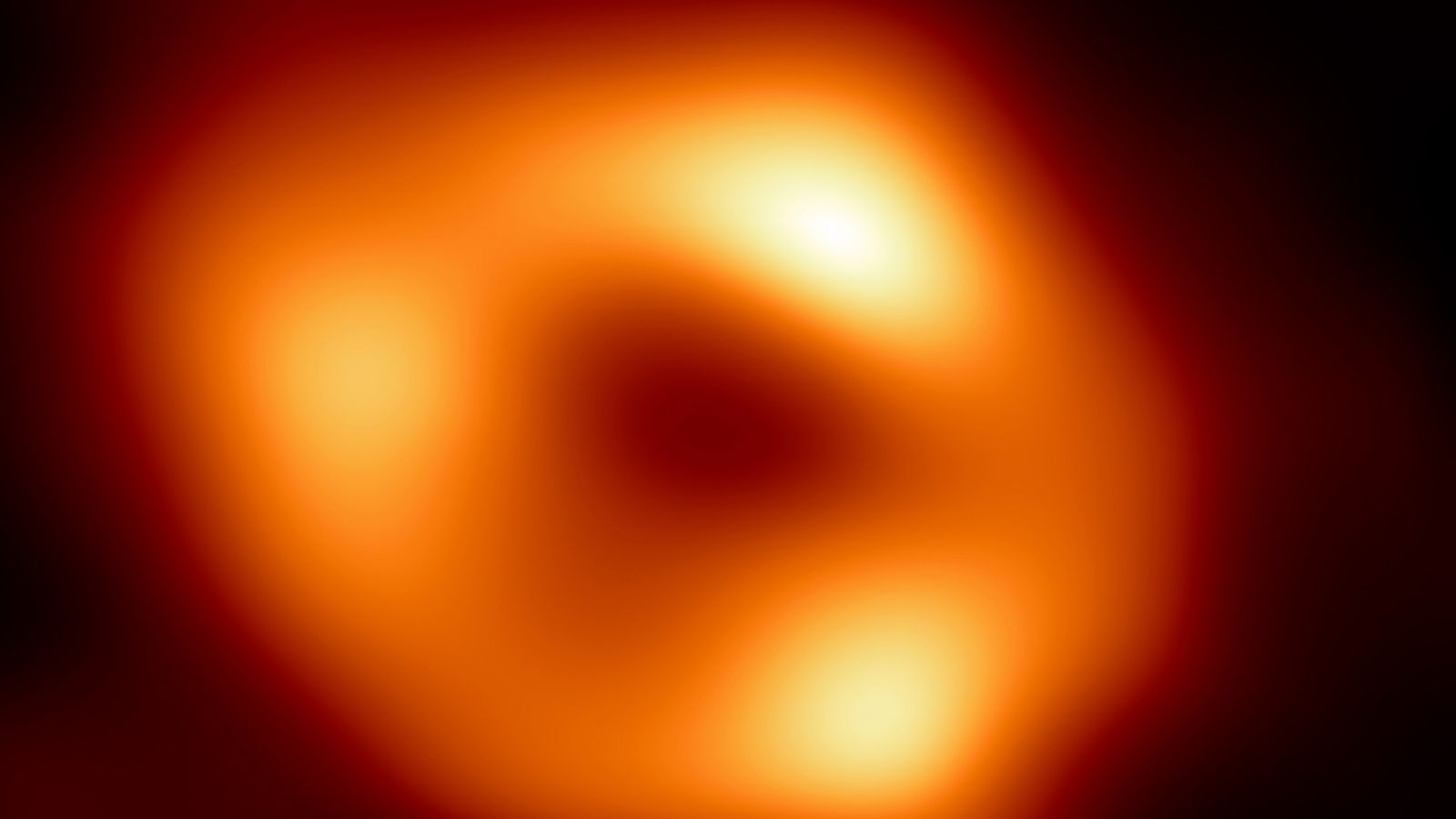The first image of the massive black hole at the centre of our Milky Way galaxy has been revealed.
The image, unveiled on Thursday, is from the Event Horizon Telescope – a collection of eight synchronised radio telescopes around the world.
Previous efforts had found the black hole in the centre of our galaxy too jumpy to get a good picture.
It had been difficult as light is known for getting chaotically bent and twisted around by gravity as it gets sucked into the abyss along with superheated gas and dust.
The colourised image unveiled today is from the international consortium behind the Event Horizon Telescope, a collection of eight synchronized radio telescopes around the world.
Previous efforts had found the black hole in the centre of our galaxy too jumpy to get a good picture.
The University of Arizona’s Feryal Ozel called the black hole “the gentle giant in the centre of our galaxy” while announcing the new image.
Royal Mail reveals plans for 50 new postal drone routes
Former Twitter vice president on Donald Trump, Elon Musk, and billionaires’ whims controlling social media
Parasitic worms get sucked into gender bias row amid claims of names being sexist
The Milky Way black hole is called Sagittarius A(asterisk), near the border of Sagittarius and Scorpius constellations. It is four million times more massive than our sun.
This is not the first black hole image.
The same group released the first one in 2019 and it was from a galaxy 53 million light-years away.
Read more: NASA releases audio recording of a black hole – and it sounds like a Hans Zimmer score
The Milky Way black hole is much closer, about 27,000 light-years away.
A light year is 5.9 trillion miles (9.5 trillion kilometres).
Astronomers believe nearly all galaxies, including our own, have these giant black holes at their centre, where light and matter cannot escape.
This makes it extremely hard to get images of them.
The project cost nearly $60 million with $28 million coming from the US National Science Foundation.
The Milky Way is a spiral galaxy that contains at least 100
billion stars.
When viewed from above or below it looks a spinning pinwheel, with our sun situated on one of the spiral
arms and Sagittarius A* located at the centre.
Harvard-Smithsonian Centre for Astrophysics astrophysicist Michael Johnson called the black hole “ravenous but
inefficient,” eating relatively little matter.




